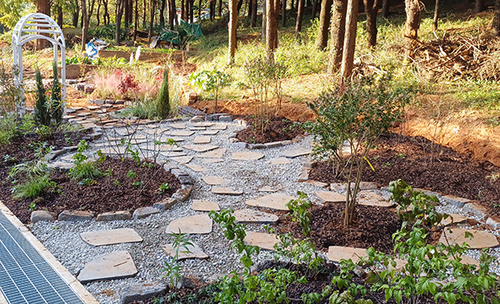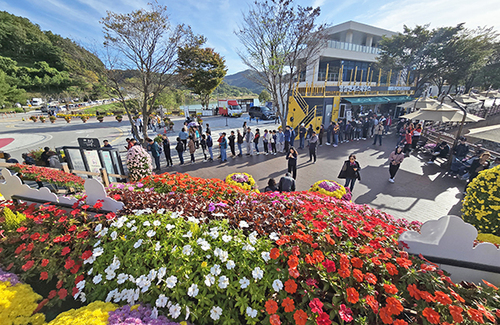| ▲ 소양ㆍ상관ㆍ구이 방면으로 확대되는 전주~완주 지간선제 2단계 노선개편이 오는 19일부터 시행되고 전주 시내 주요 도심 축과 대로를 10분 간격으로 관통하는 간선버스가 10개 노선에 배치된다. (간선버스 통합 노선도) / 노선도 제공 = 전주시청 © 김가영 기자 |
|
전북 전주 시내 주요 도심 축과 대로를 10분 간격으로 관통하는 간선버스가 운행된다.
전주시는 "소양ㆍ상관ㆍ구이 방면으로 확대되는 전주~완주 지간선제 2단계 노선개편이 오는 19일부터 시행되고 간선버스가 10개 노선에 배치된다"고 11일 밝혔다.
새롭게 선보이는 간선버스 번호 체계는 네 자리로 ▲ 1000번대(2개 노선) ▲ 2000번대 ▲ 3000번대(2개 노선) ▲ 4000번대 ▲ 5000번대(2개 노선) ▲ 6000번대(2개 노선)의 10개 노선이다.
특히 주요 도로만 운행되는 만큼, 정확한 배차간격을 지키고 환승을 하더라도 빠른 이동이 가능한 것이 장점이다.
먼저, 남ㆍ북을 연결하는 노선은 우석대에서 출발해 기린대로~팔달로를 경유해 평화동까지 달리는 2개 노선(1001번ㆍ1002번)이 운행된다.
또, 에코시티와 동부대로인 전주역과 백제대로를 경유하는 2000번(송천동~삼천동) 노선과 가련산로와 홍산로를 경유하는 3000번대(송천동~평화동) 2개 노선(3001번ㆍ3002번)에 20대가 달린다.
또한 동ㆍ서를 연결하는 노선은 전주대를 출발해 서원로~충경로~아중로를 거쳐 전주대로 되돌아오는 4000번 노선이다.
전주 구도심과 신도심을 연결하는 순환노선의 경우, 전주대에서 출발하는 5000번대 2개 노선(5001번ㆍ5002번)과 비전대에서 출발하는 6000번대 2개 노선(6001번ㆍ6002번)이 신설됐다.
무엇보다, 간선버스 중간시간표를 도입해 정시성과 안정성을 확보하는 동시에 교통약자들의 이동 편의를 높이기 위해 전 노선에 저상버스가 배치된다.
한국교통연구원은 노선체계 개편을 통해 시내버스 평균 통행시간이 5분여 단축되고 1에 가까울수록 직선에 가까운 노선임을 뜻하는 통행 굴곡도도 기존 3.79에서 1.45로 줄어드는 등 시민들의 대중교통 편의가 대폭 개선될 것으로 분석했다.
전주시 이강준 시민교통본부장은 "이번 간선버스 노선 시행에 이어 오는 9월 전주~완주 지간선제 3단계 노선 개편을 통해 간선버스ㆍ일반버스ㆍ마을버스 간의 연계성을 높이고 새로운 간선버스 축을 신설하는 등 간선버스를 축으로 한 노선체계의 완성도를 높여나갈 계획"이라고 설명했다.
그러면서 "간선버스와 일반버스의 새로운 시내버스 노선체계가 구축되는 이번 노선 개편은 보다 효율적이고 편리한 대중교통 서비스로 새롭게 변화하는 전환점이 될 것으로 기대한다"고 덧붙였다.
한편, 완주군 지역의 시내버스 이용이 어려운 외곽지역 지선을 담당할 마을버스(20개 노선 14대)는 지난 3일부터 시범운행에 돌입했다.
☞ 아래는 위 기사를 구글 번역이 번역한 영문 기사의 '전문' 입니다.
구글 번역은 이해도를 높이기 위해 노력하고 있으며 영문 번역에 오류가 있음을 전제로 합니다.
【Below is the 'full text' of the English article translated by Google Translate.
Google Translate is working hard to improve understanding, and assumes that there are errors in the English translation.】
Jeonju, reorganization of 'city bus routes' from the 19th
Every 10 minutes on major downtown axes and roads… trunk bus service
Reporter Kim Ga-young
A trunk bus runs through major downtown axes and main roads in Jeonju, Jeollabuk-do every 10 minutes.
The city of Jeonju announced on the 11th that "the second phase of the Jeonju-Wanju main line, which will expand to Soyang, Sanggwan, and Gui, will be implemented from the 19th, and trunk buses will be deployed on 10 routes."
The newly introduced arterial bus numbering system is a four-digit system: ▲ 1000s (2 routes) ▲ 2000s ▲ 3000s (2 routes) ▲ 4000s ▲ 5000s (2 routes) ▲ 6000s (2 routes) It's a dog route.
In particular, as only major roads are operated, the advantage is that it is possible to move quickly even if the trains are transferred by keeping the exact interval between trains.
First of all, two routes (No. 1001 and No. 1002) running from Wooseok University to Pyeonghwa-dong via Kirin-daero to Paldal-ro will connect South and North Korea.
In addition, 20 on 2 routes (No. 3001 and No. 3002) on Route 2000 (Songcheon-dong ~ Samcheon-dong) via Eco City and Dongbu-daero, Jeonju Station and Baekje-daero, and Route 3000 (Songcheon-dong ~ Pyeonghwa-dong) via Garyeonsan-ro and Hongsan-ro the price runs
Also, the route connecting East and West is Route 4000, which departs from Jeonju University and returns to Jeonju University via Seowon-ro-Chunggyeong-ro-Ajung-ro.
In the case of the circular route connecting the old and new downtown areas of Jeonju, two routes in the 5000 series (Nos. 5001 and 5002) departing from Jeonju University and two routes in the 6000 series (Nos 6001 andㆍ6002).
Above all, low-floor buses will be deployed on all routes to ensure punctuality and stability by introducing an intermediate bus timetable, while at the same time improving the mobility of the transportation vulnerable.
According to the Korea Transportation Research Institute, through the reorganization of the route system, the average travel time of city buses will be shortened by 5 minutes, and the curvature of traffic, which means that the route is closer to 1, will also be reduced from 3.79 to 1.45. analyzed as
Jeonju City Citizen Transportation Headquarters Director Lee Kang-joon said, "Following the implementation of this trunk bus route, the third-phase route reorganization between Jeonju and Wanju will be implemented in September to increase the connectivity between arterial buses, general buses, and village buses, and establish a new trunk bus axis. We plan to improve the completeness of the route system as an axis,” he explained.
He added, "We expect this route reorganization, in which a new city bus route system of arterial buses and general buses will be established, will be a turning point for new changes to more efficient and convenient public transportation services."
Meanwhile, village buses (14 on 20 routes), which will be in charge of branch lines in suburban areas where it is difficult to use city buses in the Wanju-gun area, started trial operation from the 3rd.






















 많이 본 뉴스
많이 본 뉴스











